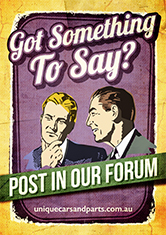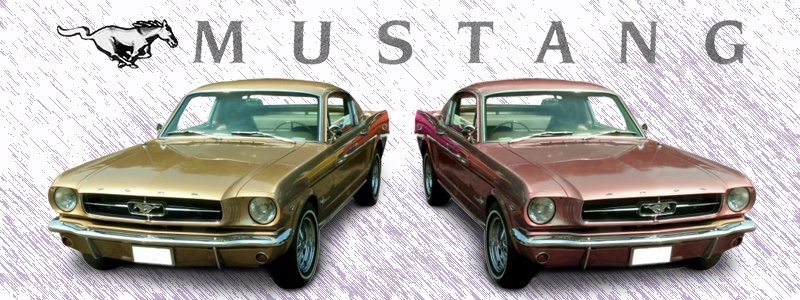Ford Mustang
Reviewed by Unique Cars and Parts
Our Rating: 5
Introduction
The date was April 17th,
1964. Intermediate sized muscle cars, with big block engines were gradually replacing the full sized muscle car. Lee Iacocca, Ford's General Manager, had always envisioned a small sports car to be the next hot item in the street wars.
Ford decided that instead of improving their lackluster intermediate, they would do the competition one better and introduce a whole new breed of
automobile, the pony car. Originally designed as a two seater in the European tradition, Iacocca realized that true success depended on volume sales. Therefore the Ford Mustang was introduced as a
1965 model that was based on the compact
Falcon to lower production costs.
Originally named after the much lauded World War 2 fighter, the P-51 Mustang, preliminary allusions were made to the horse, and the horse motif quickly became the emblem for the Mustang. It came with an obligatory back seat and a multitude of options that would give the buyer an opportunity to customize their purchase, and generate extra profits for Ford. Plymouth faithful stress that their Barracuda beat the Ford Mustang to the market by two weeks.
But it was the Mustang which racked up over 22,000 sales on its first day and one million sales in its first two years, that turned the market and people's attention to the pony car. Buyers loved its low price, long hood, short trunk styling, and its myriad of options. Ford loved its high volume sales and visibility.
In mid
1964, Ford introduced a sporty 2+2 fastback body style to go along with the hardtop coupe and convertible. Enthusiasts also cheered the new "K-code" 271bhp 289 cid V8 that finally put some performance to match the Mustang's good looks. For those that wanted more, the legendary
Carroll
Shelby and Ford collaborated to produce the Shelby GT-350, a Ford Mustang fastback specially tuned by Shelby.
The 289 V8 produced 306bhp in street tune and around 360bhp in special GT-350R race tune. These Shelby's had no back seat, were only available in white and were fully race ready.The pony car class that the Ford Mustang helped create is the only class of muscle car that still exists today.




